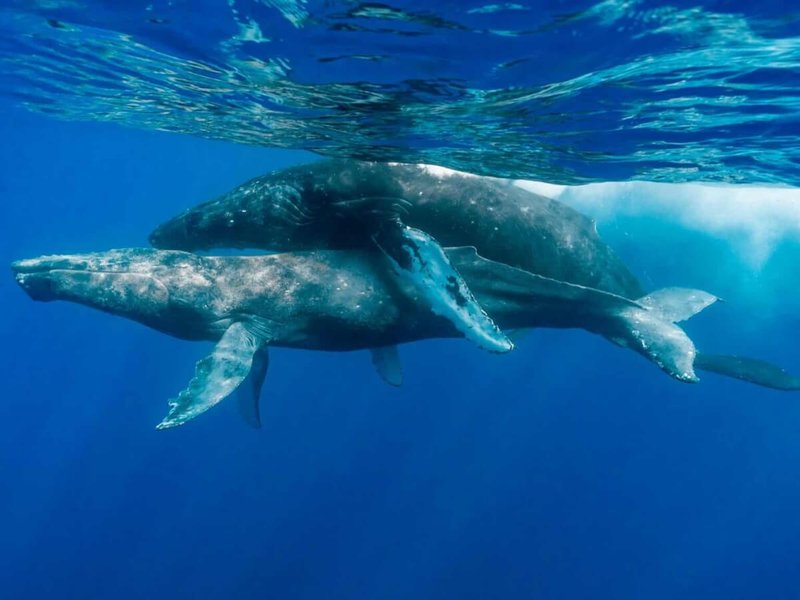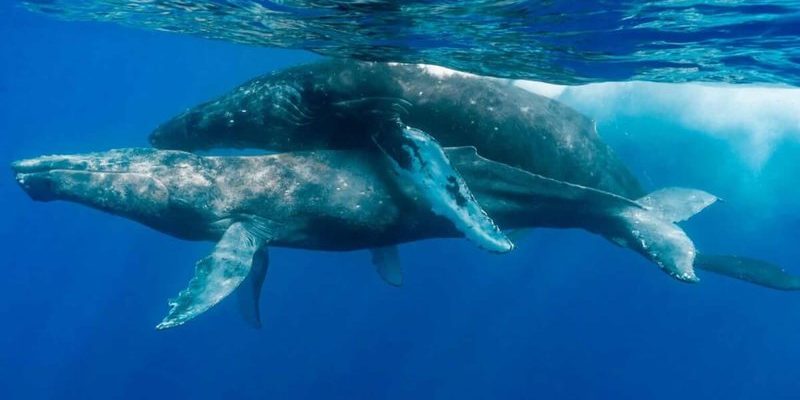
Breeding and reproduction are essential to the survival of any species, and blue whales are no different. They face challenges like changing ocean conditions and human interference, which makes their reproductive strategies even more important. Let’s dive into how blue whales mate, gestate, and nurture their young, unraveling the mysteries of their love lives in the deep blue sea.
Understanding Blue Whale Mating Behavior
When it comes to mating, blue whales have a few different behaviors that stand out. Typically, these giants form temporary pair bonds during the breeding season, which occurs primarily in warmer waters. You might wonder how they find each other in the vastness of the ocean. Blue whales rely heavily on sound. They produce low-frequency calls that can travel long distances, which helps them communicate with potential partners.
During the mating season, males often engage in competitive displays to attract females. They might swim alongside each other, diving and surfacing in a dance-like manner. This competition can be intense. The strongest and most attractive males will get the chance to mate. Once a female is ready to mate, she might mate with more than one male during the breeding season, which can increase genetic diversity in her offspring. Isn’t it interesting how nature finds a way to ensure variety?
The Gestation Period
Once a female blue whale becomes pregnant, she embarks on an incredible journey that lasts around 10 to 12 months. This lengthy gestation period is one of the longest among mammals and is crucial for the development of the calf.
During this time, the female will often migrate to productive feeding grounds to build up her energy reserves. This is important because pregnant whales need plenty of nutrients to support both themselves and their growing calf. The whale’s ability to navigate vast distances while nourishing herself and her unborn calf is a testament to their resilience.
As the pregnancy progresses, the female’s body goes through several changes. She will gain weight, and her body will store extra fat to prepare for lactation once the calf is born. This preparation is vital because blue whale calves are born weighing about 2 to 3 tons and can reach lengths of up to 25 feet!
Calving and Birth
When it comes time to give birth, the female blue whale often seeks out warmer, shallow waters for safety. This makes sense, as these areas provide more protection from potential threats like predators.
During labor, the female will usually separate from her group to have her calf. The birthing process can be quite an event, lasting several hours. Once the calf is born, it instinctively swims to the surface for its first breath. This moment is crucial because it marks the beginning of the calf’s life outside the womb.
After birth, the mother immediately begins nurturing her calf. Blue whale milk is incredibly rich in fat—around 50% fat content—allowing the calf to grow rapidly. In fact, a calf can gain up to 200 pounds a day during the first year! This growth is essential for survival, especially as the calf learns to navigate the open ocean.
Nurturing the Calf
After the calf is born, the bond between mother and calf is vital for its survival. The mother will care for the calf for about 6 to 7 months, teaching it essential skills along the way. During this time, the calf learns how to find food, communicate, and even migrate.
The mother will often guide her calf to rich feeding grounds where it can learn to eat krill, a primary food source for blue whales. While the mother continues to feed herself, she prioritizes the needs of her calf. The way she protects and nurtures her young is a beautiful example of maternal care in the animal kingdom.
As the calf grows, it will gradually become more independent but will stay close to its mother for up to a year. This bond allows them to navigate the oceans together, enhancing the calf’s chances of survival.
Challenges to Blue Whale Reproduction
Despite their astonishing breeding habits, blue whales face significant challenges in their reproductive cycle. One of the primary issues is their low reproductive rate. Female blue whales typically only give birth to one calf every 2 to 3 years. This slow reproduction rate, combined with threats like habitat loss and ship strikes, makes it difficult for populations to recover from decline.
Another major threat is climate change. Changes in ocean temperature and changing prey availability can impact the health of blue whales and their ability to reproduce successfully. As prey becomes less abundant, it becomes harder for pregnant females to sustain themselves and their calves.
Human activities, like shipping and fishing, can also disrupt blue whale breeding grounds. Increased noise pollution makes it difficult for these whales to communicate, which can affect mating success. Such challenges make conservation efforts vital for the future of blue whales.
Conservation Efforts
Due to their vulnerable status, various organizations and governments work tirelessly to protect blue whales and their habitats. These conservation efforts include creating marine protected areas where blue whales can feed and mate without interference.
Research plays a crucial role in these efforts. Scientists use tagging and tracking to monitor blue whale movements, helping to understand their breeding patterns and identify critical habitats. Public awareness campaigns also aim to educate people about the challenges blue whales face and what can be done to help.
Individuals can contribute by supporting organizations focused on marine conservation, participating in beach clean-ups, or promoting sustainable fishing practices. Every little bit helps in ensuring that these majestic creatures continue to thrive in our oceans.
In conclusion, the reproductive habits of blue whales are fascinating and complex. From their mating behaviors to the challenges they face, there’s so much to admire about their life cycles. As we learn more about these incredible animals, we can better understand the importance of protecting their future. So next time you think about blue whales, remember that their story is not just about their size but also about their survival and resilience in an ever-changing world.

